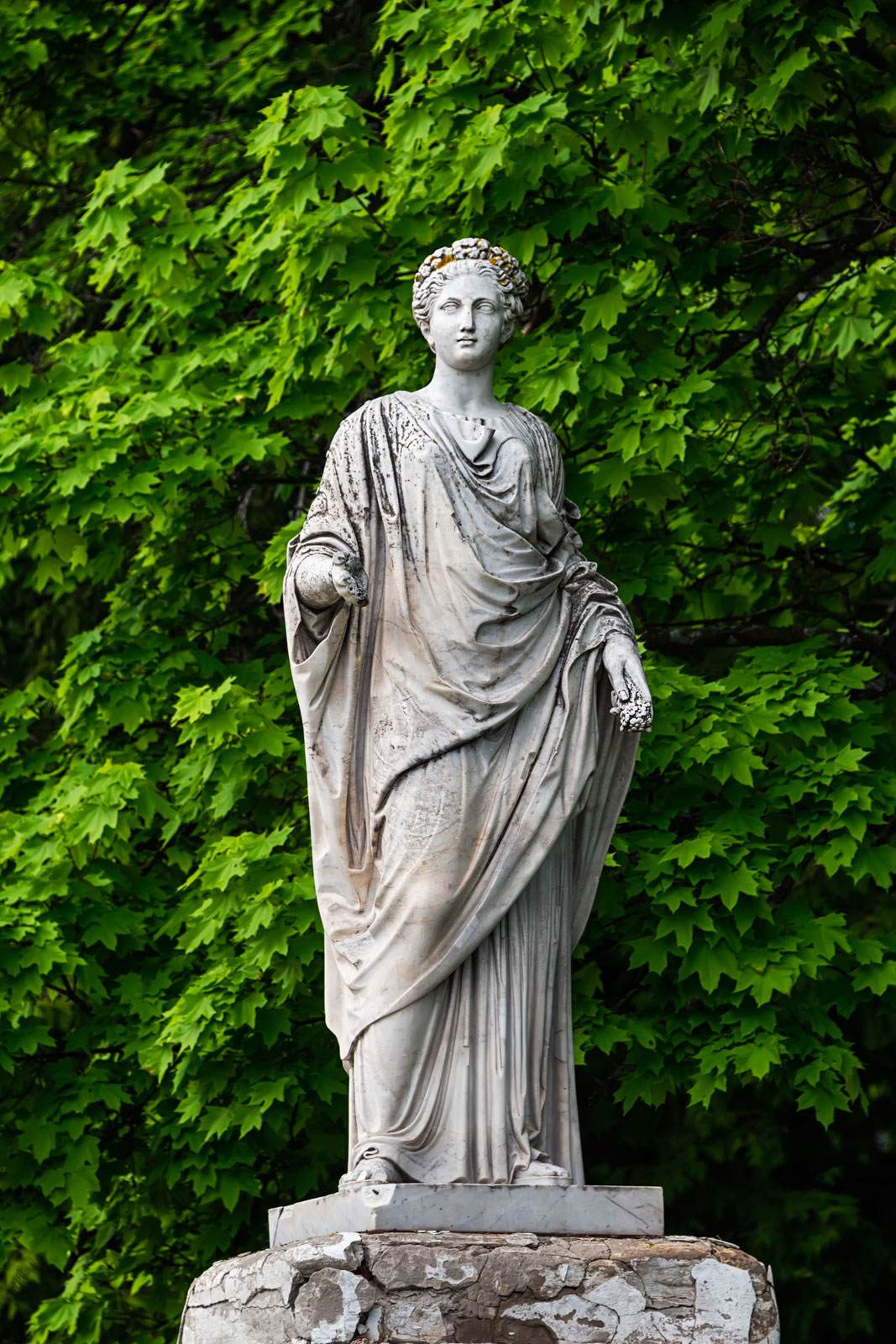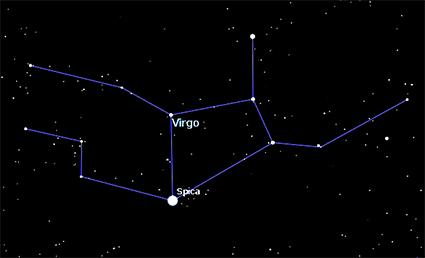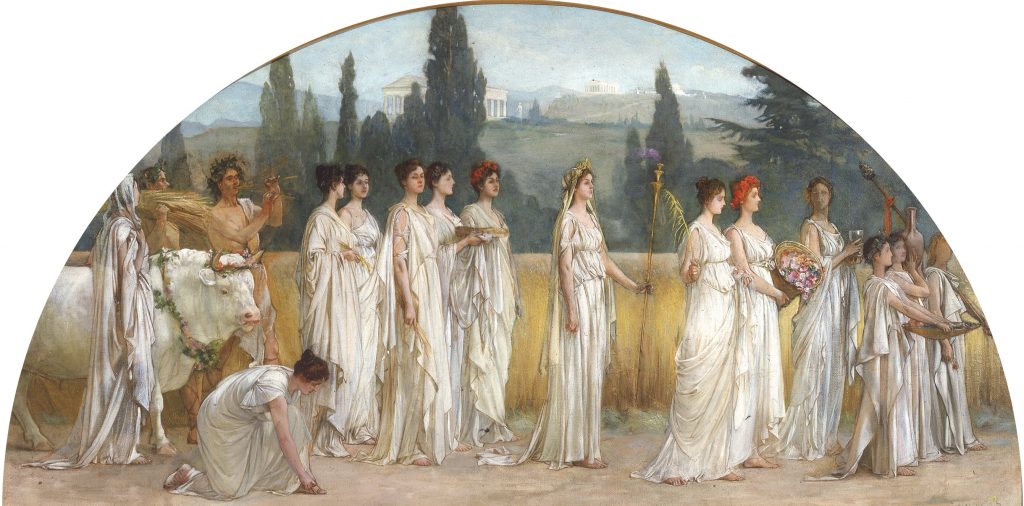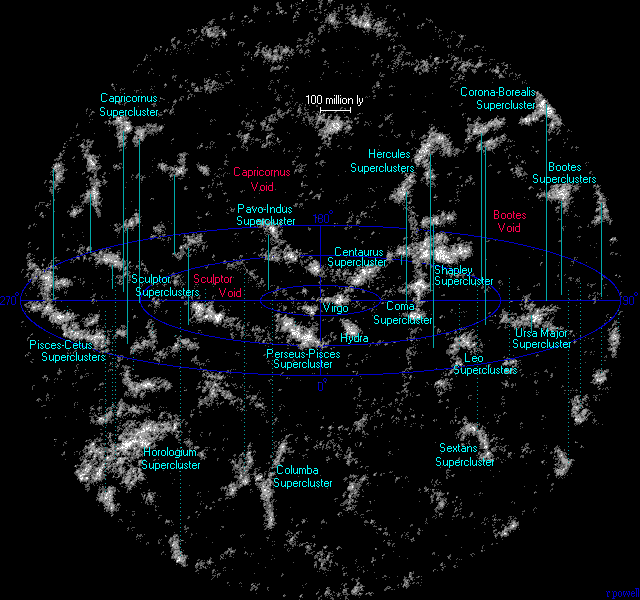
Demeter: Distraught Mother
First of all, we should point out that nobody blamed Demeter for having eaten that young boy's shoulder. She was, as the subheading above states, distraught at the time. Though the back story is well known, we review it again in order to defend this flesh-consuming goddess. One of six children conceived by the titans Cronos and Rhea, Demeter quickly matured to become the goddess of harvest and fertility: one of the twelve Olympian gods. Demeter presided over all of the crops, fields and forests of the world. All arable land was her domain and she tended to it all so diligently that all crops flourished and every speck of soil was dark, rich and fertile. With her brother Zeus, Demeter conceived Persephone, her only daughter. Demeter and Persephone delighted in each other's company and spent many years together exploring the wild regions of Earth. Unfortunately, the beautiful Persephone caught the attention of Hades, god of the Underworld. Initially, Hades was content merely to admire her from afar. Eventually, though, his desire became so overwhelming he resolved to make her his wife. One afternoon Persephone was outside gathering flowers while her mother was elsewhere. To Persephone's amazement, a widening fissure suddenly opened in the meadow. Arising from this fissure was Hades driving a chariot led by fierce black steeds. Hades swept Persephone into his arms and promptly dove back down the fissure en route to the Underworld. As soon as he was gone the ground closed behind him, leaving no trace of the opening. Demeter soon came in search of her daughter but couldn't find her. For the following nine days and nights, she roamed the world trying to find Persephone, but to no avail. Eventually Hecate, goddess of witches, encountered Demeter and advised her to consult the Sun god Helios, the one deity capable of simultaneously seeing everything that transpired on Earth. When Demeter sought out Helios, he told her that Hades had abducted her daughter in order to make her his wife. Helios added -unhelpfully- that the situation was all to the good as "Hades will prove to be a fine husband." Unconsoled by Helios' interjection, Demeter lapsed into despondency. Not only did she miss her daughter, but she assumed that Persephone would never return to Earth. Quite soon after her meeting with Helios, Demeter and the other Olympians were summoned to Tantalus' palace for dinner. Despite her distress, Demeter attended the feast, albeit out of obligation. The mad Tantalus, intent on testing the gods' omniscience, served his guests a stew made out of his son Pelops. While the other attendees immediately knew the content of their gruesome meal and pushed it away, Demeter absent-mindely ate the stew and, in so doing, consumed Pelops' shoulder. The furious Zeus promptly resurrected Pelops and sent Tantalus down to Tartarus to experience an eternity of burning thirst and ravenous hunger. Hephaestus fashioned a shoulder of ivory for Pelops to replace the one Demeter had eaten. It wasn't long after that ghastly meal that Zeus had to contend with a much greater problem: Earth had grown cold and desolate. The plants and crops were dying. All the humans were miserable: cold, hungry and on the brink of starvation. Realizing that Demeter was responsible for this famine, Zeus commanded his brother Hades to release Persphone back to her mother's care. Though incensed at his brother's demand, Hades relented, or at least seemed to do so. He spoke to Persephone through the door to her bed chamber, where she had obstinately remained since her arrival at Hades' palace. He told her that Zeus had compelled him to return her to Earth at once. Delighted at her imminent liberation, Persephone emerged from the room. She looked haggard and gaunt, both from her profound sorrow and hunger, for she had not eaten so much as a morsel since her abduction. Hades "kindly" offered her some pomegranates prior to their departure. She accepted them gladly and consumed them at once. Hades then informed Persephone that by partaking of food in the Underworld, she was obliged to remain there. Hermes, who, at Zeus' request, had been spying on Hades to make sure that he released Persephone, returned to Olympus and told Zeus of Hades' trickery. Zeus, now incensed himself, realized that Persephone was required to remain in the Underworld. Even he could do nothing to free her of this obligation. However, he did broker a compromise with his brother. For part of the year, Persephone would be allowed to live with her mother on Earth. She would then be required to live with Hades in his palace during the remainder of the year. (We sadly acknowledge that nobody asked Persephone for her opinion on the matter.) Whenever Persephone returned to Earth, Demeter became so joyous that the land turned soft and fertile, crops flourished and all vegetation grew luxuriantly. However, when Persephone returned to Hades, Demeter became so morose that all crops withered, the ground hardened and the world grew cold. In the mythological world, the change of seasons was ascribed to Persephone's vacillation between Earth and the Underworld.

Persephone is the Greek counterpart to the zodiac constellation Virgo the Maiden. The Sun progresses through Virgo from mid September to the end of October: the time period between summer's end and the end of summer-like weather. Virgo disappearance behind the setting Sun corresponds to Persephone's return to the underworld and the start of the protracted cold season. Virgo rises when the Sun sets in March, the time when Persephone ascends back to Earth and the frozen world begins to thaw, albeit with frustrating slowness.

The abduction of Persephone, the subsequent search conducted by Demeter and her daughter's ultimate return to Earth were the theme of the sacred rituals now known as the Eleusinian Mysteries. That these rituals were conducted annually at the Panhellenic Sanctuary of Eleusis is about all that we know of them. Initiates into the mysteries were bound to a solemn oath of secrecy that apparently nobody broke as knowledge of them remains scant. It is known that during the mysteries, a single ear of corn was presented to the participants. Though that act seems prosaic, it is said those who participated in the mysteries experienced an intense rapture rarely bestowed onto mortals. A rare moment of Aether and Olympian ecstasy on Earth. As the Eleusinian Mysteries remain profoundly mysterious, that claim could be readily believed for it will never be disputed.
THE SOUTHWORTH PLANETARIUM
207-780-4249 www.usm.maine.edu/planet
70 Falmouth Street Portland, Maine 04103
43.6667° N 70.2667° W
Altitude: 10 feet below sea level
Founded January 1970
Julian Date: 2459192.16
2020-2021: LVI
THE DAILY ASTRONOMER
Tuesday, December 8, 2020
Remote Planetarium 130: The Pisces-Cetus Supercluster Complex
Our next step in the cosmic progression is a doozy, a technical term lifted from the "Astrophysical Journal." The Pisces-Cetus Supercluster Complex, seen below in an artistic depiction, is the structure that contains the Virgo Supercluster and a vast array of others.

This incomprehensibly large structure is one billion light years in length and approximately 150 million light years wide. One can separate this Supercluster Complex into five distinctive regions: (1) The Pisces-Cetus Supercluster. The Pisces-Cetus Superclusters are its richest clusters and consequently became the complex's namesake. (2) The Perseus-Pegasus chain of superclusters, including the Perseus-Pisces Supercluster. (3) The Laniakea Supercluster, which, as we learned during the last Remote Planetarium session, contains the Virgo Supercluster. This supercluster contains the Local Group of which the Milky Way is a part. (4) The Hercules and Sculptor Superclusters as well as the other members of the Sculptor Region and (5) Pegasus-Pisces Chain of Superclusters.
According to recent estimates, the Pisces-Cetus Supercluster Complex is 1,000,000,000,000,000,000 times more massive than the Sun. This value is determined by observing the motions of galaxies within the clusters comprising this complex. Our own Virgo Supercluster of Galaxies accounts for 0.1 percent of the complex's mass. While not exactly negligible, our entire home supercluster is miniscule relative to its home complex.
University of Hawaii astronomer R. Brent Tully only discovered this complex in 1987! As we can see in the above image, this complex also contains a few voids that, like the other clusters, are named for the constellation regions in which they were observed.
As we will discover next week as we continue our progression toward the outermost reaches, the Pisces-Cetus Supercluster Complex is not the largest structure. We will move from the realm of the utterly incomprehensible to that of the mind-numbingly incomprehensible. That one syllable difference will prove quite substantial.
To subscribe or unsubscribe from the Daily Astronomer: